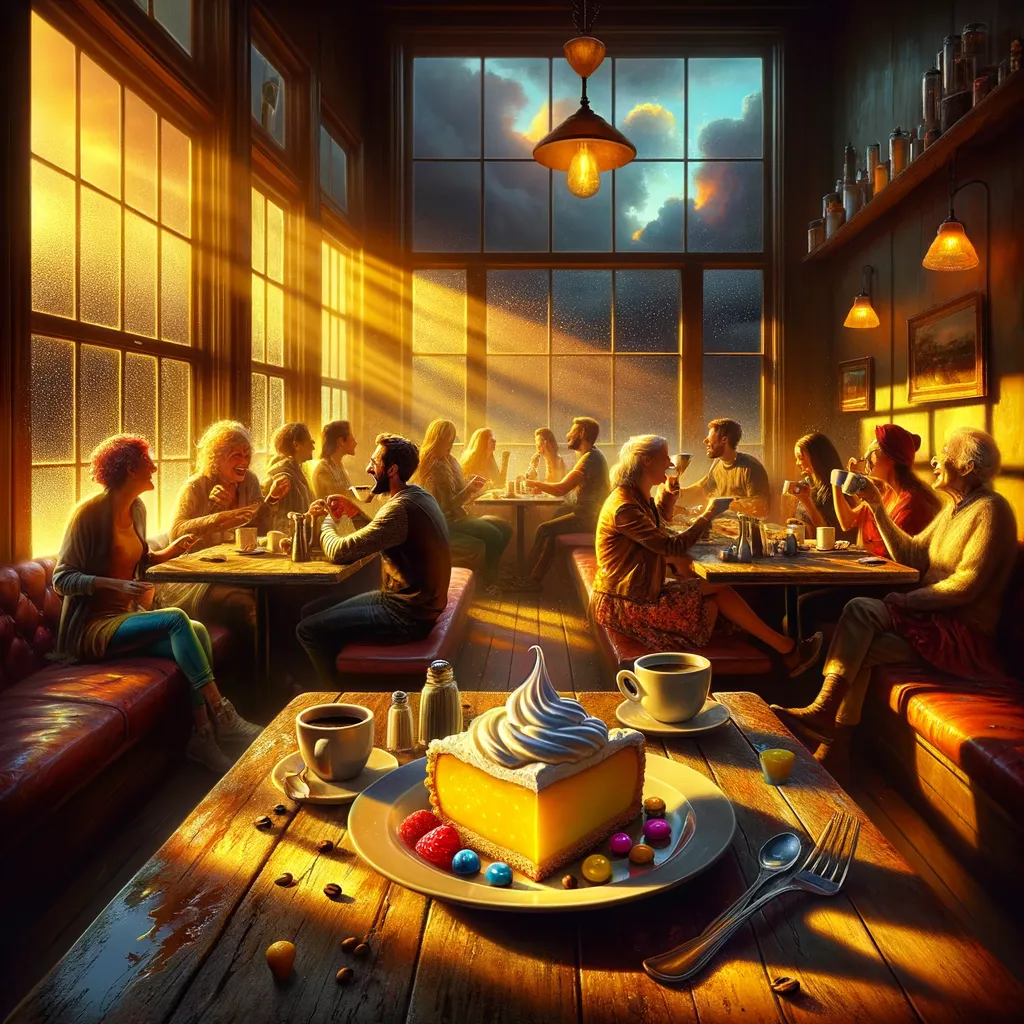In a Dusty Library, Memories Spark Unexpected Journeys
In a forgotten library, where dust dances in golden light, a writer stumbles upon a long-simmering idea—a book that explores the intricate relationship between memory and identity. The protagonist, Elara, embarks on a journey through her past, revealing how each memory serves as a prism that refracts her sense of self in unexpected ways. As she revisits sun-drenched afternoons and bittersweet moments of loss, the narrative unfolds the delicate balance of joy and sorrow, highlighting the transient nature of friendships and love. A surprising twist emerges when Elara discovers letters from her younger self, prompting her to reconnect with the dreams and fears that shaped her. Ultimately, the story reveals that memory is not merely a record of the past, but a guiding compass for the future, inviting readers to reflect on how their own narratives shape the lives they choose to lead.
In the memory of March 29, 2008, I found myself standing in the middle of a forgotten library, dust swirling in the golden rays of afternoon light filtering through high windows. The air was thick with the scent of aging paper and the whispers of stories long sealed in silence. It was here, surrounded by the ghosts of unwritten tales, that I first caught a glimpse of a book that had always simmered in the recesses of my mind—a book that sought to explore the delicate dance between memory and identity.
The theme of this unwritten book was the intricate tapestry of human experience, woven together by the threads of memories both cherished and painful. Each chapter would unfurl like petals of a flower, revealing the multifaceted nature of recollection. The protagonist, a woman named Elara, would journey through her past, revisiting moments that shaped her, only to discover that each memory was a prism, refracting light in ways she had never anticipated. As she delved deeper into her history, the reader would witness the fluidity of her identity, constantly reshaped by the stories she clung to and those she let fade.
Amidst the shelves, I stumbled upon a dusty tome, its spine cracked and pages yellowed. As I opened it, I was transported into the life of Elara. One chapter would recount her childhood, a sun-drenched afternoon spent in her grandmother’s garden, where the scent of lavender mingled with the laughter of carefree days. Yet, the memories that seemed idyllic were soon juxtaposed with the shadows of loss—her grandmother’s passing, a moment that would forever alter the landscape of her heart. Here, the book would ponder how joy and sorrow coexist, each amplifying the other.
As Elara navigated her youth, she encountered friendships that felt timeless, yet were ephemeral. The reader would feel the thrill of camaraderie, the electrifying bond forged in shared secrets and dreams. But as she grew, so did the inevitable drift; friends moved away, lives diverged, and Elara was left clutching the fragments of what once was. The narrative would challenge the notion of permanence, inviting readers to reflect on their own transient connections and the bittersweet nature of growth.
Each page turned would reveal new dimensions of Elara’s life, her experiences layered like the rings of a tree. In her twenties, she would grapple with love, a tempest that brought both elation and heartache. The book would explore how love, in its many forms, redefines who we are. Through heartbreak, Elara would learn resilience; through companionship, she would discover the profound impact of shared dreams. This exploration would serve as a mirror, prompting readers to examine the transformative power of their own relationships.
A surprising twist would emerge in the narrative as Elara, now in her thirties, uncovers a box of letters hidden away in her attic. Each letter, penned by her younger self, carried hopes, fears, and dreams that seemed foreign yet familiar. This unexpected discovery would become a pivotal moment, allowing her to reconnect with the essence of who she once was. The book would illustrate the cyclical nature of identity, revealing how our past selves linger within us, waiting for the right moment to resurface.
As Elara pieced together her life’s mosaic, the narrative would weave in broader reflections on the collective memory of society. The book would address how history, too, is a tapestry of individual stories, each contributing to the greater whole. Readers would be invited to ponder the shared experiences that bind humanity together, transcending time and space. In this way, the unwritten book would serve as both personal and universal, a bridge connecting hearts across generations.
The final chapters would bring Elara to a poignant realization: that memory is not merely a record of the past but a compass guiding the future. With each recollection, she would learn to embrace the complexity of her identity, understanding that it is shaped by both joy and sorrow. The narrative would culminate in a moment of clarity, where Elara stands at the crossroads of her life, ready to forge ahead with a newfound sense of self.
As I closed the imagined pages of this unwritten book, I realized that its essence lingered within me, a testament to the power of reflection and the beauty of discovery. In the quiet of the library, I was struck by a profound question: How do the stories we tell ourselves shape the lives we choose to lead?
Memory weaves the intricate tapestry of identity, each thread a story that shapes the self, guiding the heart through the delicate dance of joy and sorrow.



